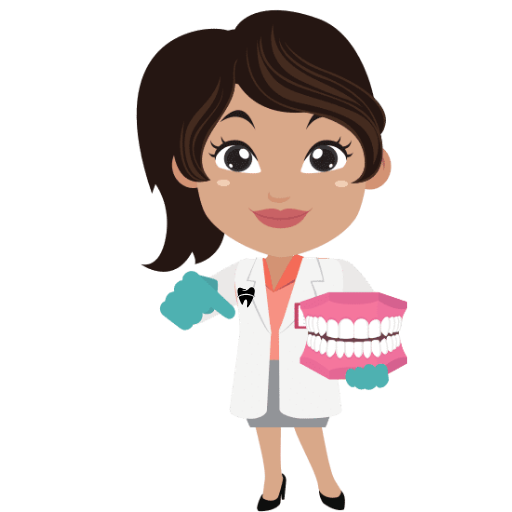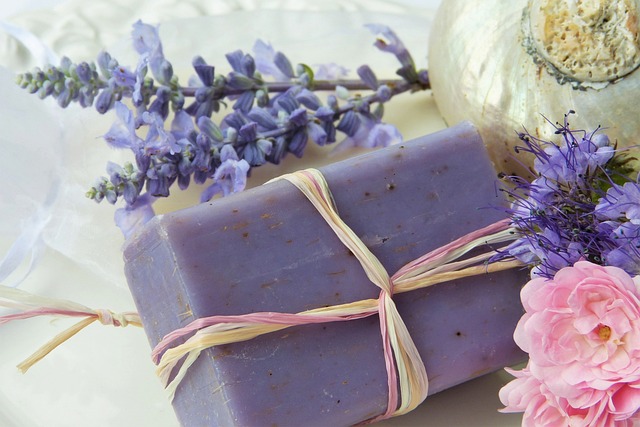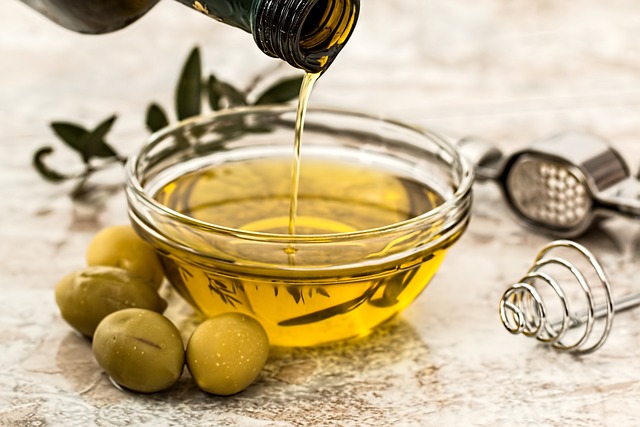Keeping your veneers clean is crucial for maintaining a healthy, dazzling smile. In this article, we will explore effective dental hygiene practices to ensure your teeth and veneers remain in top-notch condition.
1. Understanding Veneers: A Brief Introduction to Dental Enhancements
An introduction to dental enhancements can provide valuable information about veneers. Veneers are thin, custom-made shells that are bonded to the front surface of teeth. They are a popular dental solution for improving the appearance of teeth by addressing issues such as discoloration, gaps, chipped or misaligned teeth, and even worn enamel. If you’re looking to enhance your smile, understanding veneers can be the first step in achieving the results you desire.
Veneers offer several benefits that make them a sought-after dental enhancement option. Here are some key points to consider:
- Natural-looking results: Veneers are designed to match the color, shape, and size of your natural teeth, giving you a seamless and natural-looking smile.
- Durable and long-lasting: With proper care, veneers can last for many years, providing a long-term solution to enhance the aesthetics of your teeth.
- Stain-resistant: Unlike natural teeth, veneers are resistant to staining, allowing you to enjoy your favorite foods and beverages without worrying about discoloration.
- Minimally invasive: The process of getting veneers typically involves minimal tooth preparation, preserving the majority of your tooth structure.
Understanding veneers and their benefits can assist you in making an informed decision about whether they are the right dental enhancement option for you. It’s always recommended to consult with a qualified dentist who can assess your individual needs and guide you through the journey of achieving your dream smile.
2. Maintaining Oral Hygiene: The Basics You Need to Know
Maintaining good oral hygiene is crucial for overall health and well-being. By following a few basic practices, you can keep your teeth and gums in their best condition. Here are some essential tips to help you maintain optimal oral health:
– Brush your teeth twice a day: Use a soft-bristled toothbrush and fluoride toothpaste to thoroughly clean your teeth. Brushing at least twice a day, in the morning and before bed, helps remove plaque and prevents cavities and gum disease. Remember to brush gently in a circular motion and don’t forget to clean your tongue to remove bacteria and freshen your breath.
– Floss daily: In addition to regular brushing, flossing is vital for removing plaque and bacteria from areas that a toothbrush cannot reach. Slide the floss gently between your teeth and carefully move it up and down along the sides. Be sure to clean both sides of each tooth and avoid snapping the floss, as it can harm your gums. Flossing helps prevent gum disease and cavities, promoting healthier teeth and gums.
– Limit sugary and acidic foods: Foods high in sugar and acids can damage your teeth and contribute to tooth decay. Reduce your intake of candies, sodas, and acidic fruits to maintain a healthy pH balance in your mouth. When consuming these foods, rinse your mouth with water afterward or chew sugar-free gum to stimulate saliva production, which helps neutralize acids and rinses away food particles.
- Visit your dentist regularly: Regular dental check-ups and cleanings are essential for maintaining oral health. Your dentist can detect any potential issues early on and provide necessary treatments. Aim to visit your dentist every six months, or more frequently if advised.
By implementing these simple yet crucial habits into your daily routine, you can maintain optimal oral hygiene and enjoy a healthy, beautiful smile for years to come. Remember, consistent oral care is the key to a lifetime of strong teeth and healthy gums.
3. Step-by-Step Guide: Cleaning Your Teeth with Veneers Made Easy
When it comes to maintaining your dental health and preserving the appearance of your veneers, proper cleaning is key. Follow this step-by-step guide to ensure that you clean your teeth with veneers effectively and effortlessly.
Brushing:
- Choose a soft-bristled toothbrush and a non-abrasive toothpaste.
- Hold your toothbrush at a 45-degree angle and gently brush in a circular motion.
- Pay extra attention to the areas where your veneers meet your natural teeth, as plaque can accumulate there.
- Rinse your mouth thoroughly with water.
Flossing:
- Use a waxed floss or a floss specifically designed for veneers.
- Gently guide the floss between your teeth, taking care not to snap it against your veneers.
- Slide the floss up and down, ensuring you clean along the edges of each tooth.
- Repeat this process for every tooth.
- Finish by rinsing your mouth again with water or an alcohol-free mouthwash.
By following these simple and effective steps, you can maintain the cleanliness and longevity of your veneers, keeping your smile radiant for years to come.
4. Oral Care Products: Choosing the Right Tools for Your Veneers
When it comes to maintaining your veneers, choosing the right oral care products is crucial in order to keep them looking their best. Here are some key tools that can help you in your daily oral care routine:
Toothbrush: Opt for a soft-bristled toothbrush to avoid damaging or scratching the surface of your veneers. Look for one with a small head to easily reach all areas, and consider using an electric toothbrush for a more thorough cleaning experience.
Toothpaste: Use a non-abrasive toothpaste that is specifically formulated for veneers. Avoid toothpaste that contains baking soda or harsh chemicals, as these can cause dullness or discoloration over time. Look for a toothpaste that contains fluoride to help prevent tooth decay and protect your natural teeth surrounding the veneers.
- Floss: Use a gentle floss that easily glides between your teeth and effectively removes plaque without causing irritation to your gums. Waxed or tape floss can be a good choice for veneers, as they are less likely to fray or shred.
- Mouthwash: Incorporating an alcohol-free mouthwash into your routine can help freshen your breath and reduce bacteria that can cause plaque and gum problems. Look for a mouthwash that is specifically designed for daily use and does not contain any ingredients that may harm your veneers.
- Interdental brushes: These small, cone-shaped brushes are great for cleaning between the crevices of your veneers and around the edges of your gums. They can help remove any food particles or plaque that may be hidden in those hard-to-reach areas.
By using the right oral care products and incorporating them into your daily routine, you can ensure that your veneers stay in optimal condition and provide you with a beautiful smile for years to come.
5. Brushing Techniques: Do’s and Don’ts for a Gleaming Smile
In order to achieve a gleaming smile, it is important to follow proper brushing techniques. Here are some essential do’s and don’ts that you should keep in mind:
Do’s:
- Brush at least twice a day, preferably after meals, using a soft-bristled toothbrush.
- Hold your toothbrush at a 45-degree angle against your gum line, ensuring the bristles reach both your teeth and gums.
- Use gentle, circular motions to clean each tooth thoroughly, without applying excessive pressure.
- Brush the inner, outer, and chewing surfaces of your teeth to remove plaque.
- Replace your toothbrush every three to four months or when the bristles become frayed.
Don’ts:
- Avoid vigorously brushing your teeth as it can damage your tooth enamel and irritate your gums.
- Avoid using a toothbrush with hard bristles, as it can cause gum recession and enamel erosion.
- Avoid brushing immediately after consuming acidic foods or drinks, as this can weaken the enamel. Instead, wait for at least 30 minutes.
- Do not forget to clean your tongue gently using a tongue scraper or the back of your toothbrush to remove bacteria and prevent bad breath.
- Do not rush through your brushing routine. Take your time and spend at least two minutes to ensure thorough cleaning.
6. Flossing with Veneers: Navigating the Challenges Effectively
Flossing with veneers can present some challenges, but with the right techniques and tools, you can effectively navigate these obstacles and maintain excellent oral hygiene. Here are some tips and strategies to help you floss your teeth with veneers:
- Choose the right floss: Opt for a waxed floss or a floss specifically designed for veneers. These flosses are less likely to get caught on the edges of your veneers, ensuring a smoother flossing experience.
- Use an interdental brush: For areas where flossing may be difficult, such as gaps between teeth with veneers, an interdental brush can be highly effective. This small brush is designed to reach tight spaces and remove plaque and debris.
- Take it slow: Flossing around veneers requires extra care. Slowly guide the floss between your teeth, gently scraping along the sides of each tooth. Avoid snapping the floss or pushing too hard, as this could damage your veneers.
Additional tips:
- Consider using a water flosser or an air flosser to supplement your flossing routine. These devices can effectively remove plaque and debris without putting excessive pressure on your veneers.
- Regular dental check-ups are essential. Your dentist can evaluate the condition of your veneers and provide guidance on proper flossing techniques specific to your unique situation.
By following these guidelines, you can successfully maintain oral health while ensuring that your veneers remain clean, strong, and long-lasting.
7. Mouthwash and Veneers: Unveiling the Benefits and Limitations
Mouthwash and veneers are two common oral care products that can have significant benefits for your dental health and the appearance of your teeth. Let’s take a closer look at what both mouthwash and veneers can do for you, as well as their limitations.
Mouthwash benefits:
- Reduces bad breath: Mouthwash effectively freshens your breath by killing bacteria that cause odor.
- Fights plaque: Using mouthwash after brushing and flossing helps to remove any remaining bacteria, reducing the risk of cavities and gum disease.
- Promotes healthy gums: Certain types of mouthwash contain antibacterial agents that can help prevent and treat gingivitis, a common form of gum disease.
Mouthwash limitations:
- Temporary results: While mouthwash can provide immediate fresh breath, its effects are only temporary and do not address the underlying causes of bad breath.
- No substitute for brushing and flossing: Mouthwash should be used as an adjunct to regular brushing and flossing, as it cannot replace the mechanical action of removing plaque.
- Alcohol content: Some mouthwashes contain alcohol, which can cause dry mouth and contribute to oral health issues in the long run. Opting for alcohol-free alternatives may be beneficial for those with sensitive teeth or dry mouth.
Veneers benefits:
- Improved appearance: Veneers are thin shells made from tooth-colored materials that are custom-designed to cover the front surface of your teeth, instantly enhancing their color, shape, and size.
- Corrects dental imperfections: Veneers can effectively address stained, chipped, misaligned, or unevenly spaced teeth, giving you a natural-looking and beautiful smile.
- Durable and long-lasting: With proper care, veneers can last for many years, providing a lasting solution for enhancing your dental aesthetics.
Veneers limitations:
- Irreversibility: The process of applying veneers involves removing a small amount of enamel from the teeth, making it an irreversible procedure.
- Requires healthy teeth: Veneers are only suitable for individuals with healthy teeth and gums. If you have severe dental issues or gum disease, alternative treatments may be necessary.
- Potential for damage: Although veneers are strong, they can still chip or crack under excessive force, so it’s important to avoid habits like biting on hard objects or grinding your teeth.
8. The Role of Regular Dental Check-ups: Preserving Veneer Longevity
Regular dental check-ups play a crucial role in maintaining the longevity of dental veneers. These thin, custom-made shells are designed to cover the front surface of teeth, enhancing their appearance and protecting them from damage. By attending routine dental visits, individuals can ensure that their veneers remain in optimal condition for a significantly longer period of time.
During a regular dental check-up, a dentist will thoroughly examine the veneers to assess their condition. This allows any potential issues or concerns to be identified early on, preventing further damage and ensuring prompt treatment if needed. In addition, dental professionals can provide valuable guidance on how to properly care for and maintain veneers, including recommendations on oral hygiene practices, products to use, and lifestyle habits to avoid. This expert insight helps individuals avoid common pitfalls that can compromise the longevity of veneers, such as using abrasive toothpaste or biting into hard objects. Investing the time and effort into regular dental check-ups is therefore essential for preserving the beauty and durability of dental veneers.
9. Expert Tips for Safeguarding Veneers from Stains and Discoloration
Protecting your veneers from stains and discoloration is key to maintaining their pristine appearance. Here are some expert tips to help you keep your veneers looking their best:
- Practice good oral hygiene: Brush your teeth at least twice a day using a non-abrasive toothpaste. Floss daily to remove plaque and food particles that could potentially stain your veneers.
- Avoid stain-causing foods and drinks: Certain foods and beverages can easily stain your veneers. Limit your consumption of coffee, tea, red wine, and highly pigmented foods like berries or curry. If you do indulge, rinse your mouth with water or brush your teeth shortly after.
- Quit smoking: Smoking not only harms your overall health, but it can also lead to stains on your veneers. By quitting smoking, you can significantly reduce the risk of discoloration and keep your veneers looking beautiful.
Additional tips:
- Use a soft-bristled toothbrush and gentle circular motions when brushing your teeth.
- Avoid using abrasive toothpaste or mouthwashes that can damage the veneers.
- Consider using a mouthguard at night if you tend to grind your teeth, as this can protect both your natural teeth and veneers.
- Schedule regular dental cleanings to remove any surface stains and ensure the longevity of your veneers.
By following these expert tips, you can help safeguard your veneers against stains and discoloration, ensuring they retain their impeccable appearance for years to come.
10. FAQs about Dental Hygiene with Veneers: Dispelling Common Misconceptions
Below, we address frequently asked questions about maintaining dental hygiene with veneers, while debunking common misconceptions:
- Can I brush and floss normally with veneers? Absolutely! It is crucial to maintain proper oral hygiene habits when you have veneers. Brush your teeth at least twice a day using a non-abrasive toothpaste. Opt for a soft-bristled toothbrush to avoid damaging the veneer’s surface. Don’t forget to floss daily to remove plaque buildup and food particles from between your teeth, including those with veneers.
- Do veneers stain easily? Contrary to popular belief, veneers are highly resistant to staining. The materials used in their construction are stain-resistant, ensuring your smile remains bright and vibrant. However, it is still important to practice good dental habits and avoid consuming excessive amounts of highly pigmented food and drinks, like coffee, tea, and red wine, as these can gradually cause discoloration. Regular dental cleanings can help remove any surface stains and maintain the natural beauty of your veneers.
- Are veneers prone to chipping or breaking? While veneers are durable, they are not indestructible. With proper care and maintenance, veneers can last for many years. Avoid biting on hard objects, like ice or pencils, to prevent chipping or fracturing your veneers. Additionally, it’s advisable to wear a mouthguard during any activities that could potentially result in facial trauma, such as contact sports.
In conclusion, maintaining good dental hygiene with veneers is crucial. Brush gently with a non-abrasive toothpaste, floss daily, and visit your dentist regularly. Remember, with the right care, your veneers will shine brightly for years to come!






